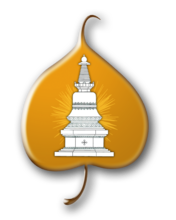How to Buy a Buddhist Statue
Based on advice from Geshe Gelek Chodha. Also available in PDF form.
Before buying a statue, you should know why you need one, how you will use it, and what it really means to you. You shouldn't buy a statue just because it is the traditional thing to do as a Buddhist.
It may sound funny, but the first thing you should check when buying a statue is whether or not it is a Buddhist statue. Many Hindu deities look similar and can be confused with Buddhist images. Hand mudras (gestures) can help in identification.
In the Tibetan tradition, statues, stupas and prayer wheels are filled with mantras and holy substances. Depending on where the statue is made, it may not be appropriate for filling. Chinese, Japanese and Thai statues, for instance, are not usually designed to be filled and may be made of porcelain or solid stone. Look for a statue made in India or Nepal and make sure it can be filled.
TOURIST BEWARE!
A statue may look like a traditional Tibetan Buddhist statue that has already been filled and sealed. Be careful - it may be sealed but is really empty inside. The same is true for prayer wheels. Trying to open them to check inside can destroy the object. Ask if it has mantras inside or if it is empty.
Quality Work
When you look for a statue, buy one that is a good-looking statue with a nice face. The size of the statue doesn't matter.
If your statue is made of a precious metal such as silver or gold, there is special benefit if it is bought with the proper intention. (This is true for many ritual objects, including water bowls, butter lamps and mandala sets.) It should not be considered a possession or something you bought because it is an antique, but instead as a way to offer the best of the best. By using an object made of a precious metal, then you are offering the precious substance at the same time.
For a traditional statue to be complete, the face should already be painted in gold (by someone trained in this specialty). If you wish, it may also have more extensive painting and jewels.
A Special Note about Thangkas
It is very tempting to buy thangkas (wall hangings) from the Internet, antique stores, etc. Buyer be warned - the figures may not be correct. It may look like a thangka, but when examined closely the symbols or deities don't make sense. You should not buy one because it's a good deal. Once you have bought as a holy object, it's difficult to know what to do with it if it's not correct or accurate.
If you are looking for thangka, the best action is to consult with monks and nuns or a long-time Kadampa Center member. You should know why you need a thangka and how to use it. However, if you understand what you are buying and know exactly what to look for, then it is probably okay to buy one on your own.
Why Are Statues Filled?
It says in the Buddhist texts that keeping an empty statue in the home for a long time, means your fortune (energy, health, material things, long life, health, friendships, etc.) will decrease. There are great benefits for the body, speech and mind in filling a statue. Filling it completes the body, speech and mind of the Buddha by helping to transform how you see the statue. The enlightened body is the statue itself; the statue is not just a shell. Enlightened speech is inside when mantras are added. Speech is the real dharma that will transform people's minds. The enlightened mind depends on each person. Geshe Gelek says, "The statue possesses something which inspires your positive mind while reciting prayers, meditating, etc."
The process of having a statue filled connects a person to the statue. Traditionally, a person who needed a statue filled would participate in the process by inviting a monk to fill and bless the statue. By talking to the monk who explains the dharma, it makes a connection with the statue. The connection is through the dharma and the blessing ceremony. In the West, since there are fewer monks, Westerners might participate in the filling process by rolling mantras and helping the monks. It is one way to generate merit - through a lot of work and patience!
For more information about statue and holy objects, see the FPMT publications at http://www.fpmt.org/shop:
Benefits and Practices Related to Statues and Stupas
See also "Microfilm and Mani Mantras for Stupas and Prayer Wheels".



